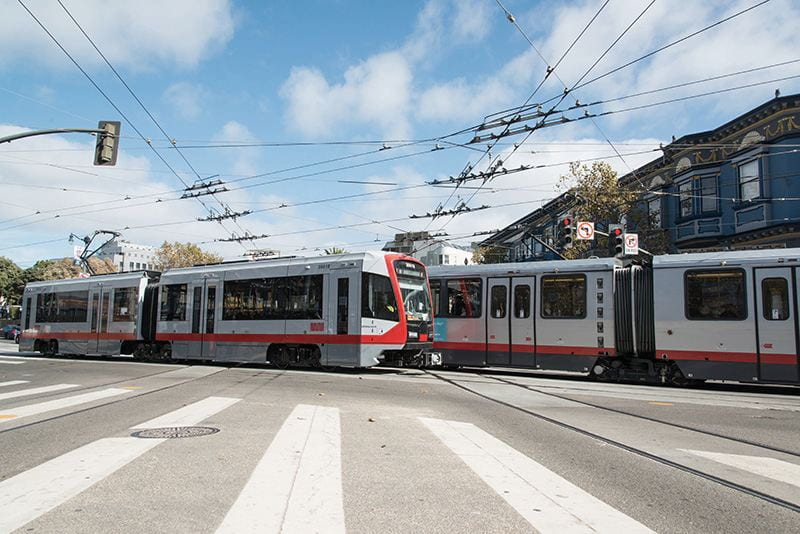What Exactly is Carbon Neutrality?
 The Importance of Being Carbon Neutral in a Time of Climate Change
The Importance of Being Carbon Neutral in a Time of Climate Change
In a time of climate change, when sea levels are rising, biodiversity is declining, and extreme weather events—including drought, heavy rain, floods, and heat waves—are becoming more prolonged and intense, it is evidently clear that something must be done in response to the anthropogenic effect we’ve had on the planet. Global greenhouse gas emissions, 76% of which is carbon dioxide, is a driving force behind climate change, and with our carbon dioxide emissions significantly increasing since 1900 and increasing even more—approximately 90%—since 1990, reducing our carbon footprint has become more of a priority.
As we are at a point where many of us are acknowledging our impact on the planet and the degree of our carbon footprint, the concept of carbon neutrality, or net zero carbon emissions, has become a goal for many. This concept of carbon neutrality essentially means having a balance between emitting carbon into the atmosphere and absorbing it from the atmosphere by various means. These means for carbon absorption include carbon sinks—which are bodies of soil, forest, or ocean that absorb more carbon than they emit—and carbon offsets or carbon credits—which is a trading mechanism that allows companies and governments to compensate for their greenhouse gas emissions, with that fee going toward funding projects that work to reduce emissions elsewhere.
It is important to note that although entities such as corporations, governments, or universities may meet current standards of being carbon neutral, they are still emitting carbon. At the end of the day, despite their purchases of carbon offsets or sinks, they are still contributing to increased greenhouse gasses into the atmosphere. This raises two questions: first, can carbon neutrality, even with support from carbon sinks, carbon offsets, and carbon credits, have a true reverse effect on climate change? And second, how effective and how legitimate is the term “carbon neutrality”? Being realistic, on a global scale, no natural or artificial carbon sinks are able to remove enough carbon dioxide from the atmosphere to mitigate climate change on their own. This is why achieving carbon neutrality is much more than simply finding carbon sinks and requires driven efforts to reduce our carbon emissions from the source.
Carbon Neutral Efforts of the University of San Francisco
Going back to the two questions presented, I believe that an effective way to approach these prompts is to look close to home, within our community at our own university’s efforts to address our carbon footprint. In 2014, the University of San Francisco (USF) pledged to be carbon neutral by the year 2050. This goal was backed by a series of green efforts, including reducing campus water use, retrofitting lighting and heating equipment, and purchasing carbon offsets rooted in the Jesuit mission. Only five years after that goal was set, USF claimed to have achieved its goal of net zero carbon emissions in 2019, thirty-one years ahead of schedule. In the case of our university, carbon neutrality was achieved—and done so quite quickly if I might add—but it is important to take a closer look at exactly what we have done to be “climate neutral.”
To start, it is important to recognize that USF has done more than simply purchase carbon credits or carbon sinks to achieve this status; the university as a whole has been working toward critically reducing resource use and switching toward more resource-efficient facilities and infrastructure. However, these efforts alone could not have taken our carbon emissions to net zero. So while USF has significantly reduced its carbon emissions, there are still certainly emissions. Here at USF, the university has worked to achieve the title of carbon neutrality by a combination of significantly reducing carbon emissions while also purchasing carbon offsets that demonstrate the mission-driven nature of the Jesuit values. Since 2015, USF has reduced annual water use by more than twenty-two percent, produced more than 4.6 gigawatt-hours of clean, renewable energy generated by solar panels on campus, and has diverted over 6.8 thousand tons of waste from landfill through reuse, recycling, composting, and food recovery programs. Additionally, USF offers over 140 courses taught on the environment or sustainability to ensure that the application of these concepts continue for future generations. However, USF’s reduction in carbon emissions from water, energy, and waste are not all that accounts for the achievement of carbon neutrality. While we are still emitting carbon, we also have a carbon sink: Star Route Farms.
Located in Bolinas, California, twenty-eight miles from the USF Hilltop campus, Star Route Farms is a self-sustaining and certified organic farm that sources fresh produce to Bay Area restaurants, farmers markets, and even USF students. Comprising forty acres of organic farm land, sixty acres of mixed-woodland habitat, and Pine Gulch Creek, Star Route Farms not only serves as a farm, but as a “living laboratory” for USF staff and students. Students across disciplines, from Classical Studies, Biology, Environmental Studies, and Philosophy, to departments such as Athletics and University Ministry, have taken the opportunity to “escape the urban landscape” and participate in the learning opportunities Star Route Farms has to offer. Through these hands-on student opportunities, Star Route Farms is one of the numerous ways USF helps students exemplify the message of changing the world from here.
It is clear that the purchase of Star Route Farms has had many positive impacts, not only because it serves as a carbon sink for USF to reach their goal of net zero carbon emissions, but because it offers many student and staff opportunities as well as providing fresh, organic, and local produce to Bay Area communities. As a student at USF, I hope there continues to be opportunities to visit Star Route Farms, where students can become more involved and educated. For now, it is crucial to continue with our efforts to reduce our carbon footprint. While USF has met their goal of carbon neutrality and has done so earlier than anticipated, that does not mean that our carbon footprint is no longer of much concern. On a student level, we must continue to be mindful of our energy and water use as well as our waste generation and diversion. Luckily, USF is not stopping at being carbon neutral and strives to become climate-positive. Becoming climate-positive is going beyond achieving net-zero carbon emissions and removing additional carbon from the atmosphere.
As a student at USF, I feel that our university’s efforts to reduce our carbon footprint and invest in opportunities to remove carbon from the atmosphere are rooted in the Jesuit mission and truly come from a place that is genuine. As an institution, we aim to change the world from here, supporting both our community and the environment with the wellbeing of future generations in mind. Our efforts to become carbon neutral come from what I feel is to be a good place, but for many others that may not necessarily be the case.
Comparing Different Motives of Carbon Neutral Efforts
When we look at corporations or celebrities with large carbon footprints, more often than not, the carbon offsets and credits they take advantage of are only done so out of obligation. Whether that be due to carbon emission limits or enforcement of carbon standards, not every entity is choosing to be carbon neutral out of the goodness of their heart. For many, exceeding limits set on carbon emissions can come at a price—quite literally—where groups may face fees and fines when greenhouse gas emissions exceed a certain standard. Thus, investing in carbon sinks or purchasing carbon credits may be better financially for many groups.
It is clear that there are different motives when it comes to carbon neutral efforts which raises a concern: are these efforts truly making a difference in people’s mindsets? At the end of the day, climate change is fueled by human greed and overconsumption. It is great that more entities are becoming carbon neutral, but how effective is carbon neutrality when we continue to possess the same anthropocentric mindset? I feel strongly that we need to genuinely understand why climate change is important and perhaps the concept of carbon neutrality serves as a loophole for us to ignore and not quite take accountability for our emissions. Taking a look at different motives of carbon neutral efforts is so important because it shines a light on what our future may look like. Are we making a sincere effort to combat climate change or are we simply being guided by our pockets? These are great questions to think about in the larger scheme of climate change and social understanding.
Carbon Neutrality and the Future of our Climate
In the end, motives aside, I feel that achieving the status of being carbon neutral is a great first step to combat climate change and reduce our carbon footprint. While it is unrealistic for us to cut our global carbon emissions completely, the concept of carbon neutrality and eventually being climate-positive offers a framework to significantly cut down on our greenhouse gas emissions that have contributed to climate change. It is also unrealistic that we will be able to reverse climate change completely, as we have already experienced the effects of biodiversity loss, extreme weather, and rising oceans. However we still have the opportunity to make change, own up to the negative effects we’ve had on the planet, and make a difference starting now.
I believe that the University of San Francisco sets a great example of how carbon neutrality can be achieved, not only with the environment in mind, but also in a way that prioritizes the education of future generations to incorporate teachings of environmental justice and climate responsibility. Further, USF has not only set an example that net zero carbon emissions can be achieved faster than we thought, but it also sets an example of how we can change the world from here. Moving forward, I encourage us to see beyond our pockets, beyond our human-centered mindsets and tackle the climate crisis from a place that seeks out genuine change. Carbon neutrality is a great first step but proper change requires continued efforts and actions across companies, governments, and individuals.
To learn more about carbon neutrality, USF’s efforts and Star Route Farms, explore the links below:
https://www.europarl.europa.eu/news/en/headlines/society/20190926STO62270/what-is-carbon-neutrality-and-how-can-it-be-achieved-by-2050
https://www.usfca.edu/news/university-san-francisco-achieves-carbon-neutrality-more-30-years-ahead-goal
https://www.epa.gov/ghgemissions/global-greenhouse-gas-emissions-data#:~:text=Since%201970%2C%20CO2%20emissions,increase%20from%201970%20to%202011.
https://www.usfca.edu/who-we-are/agents-change/beyond-carbon-neutral
https://www.usfca.edu/faculty-research/star-route-farms


